Finding Space on Earth on the ultimate extraterrestrial road trip
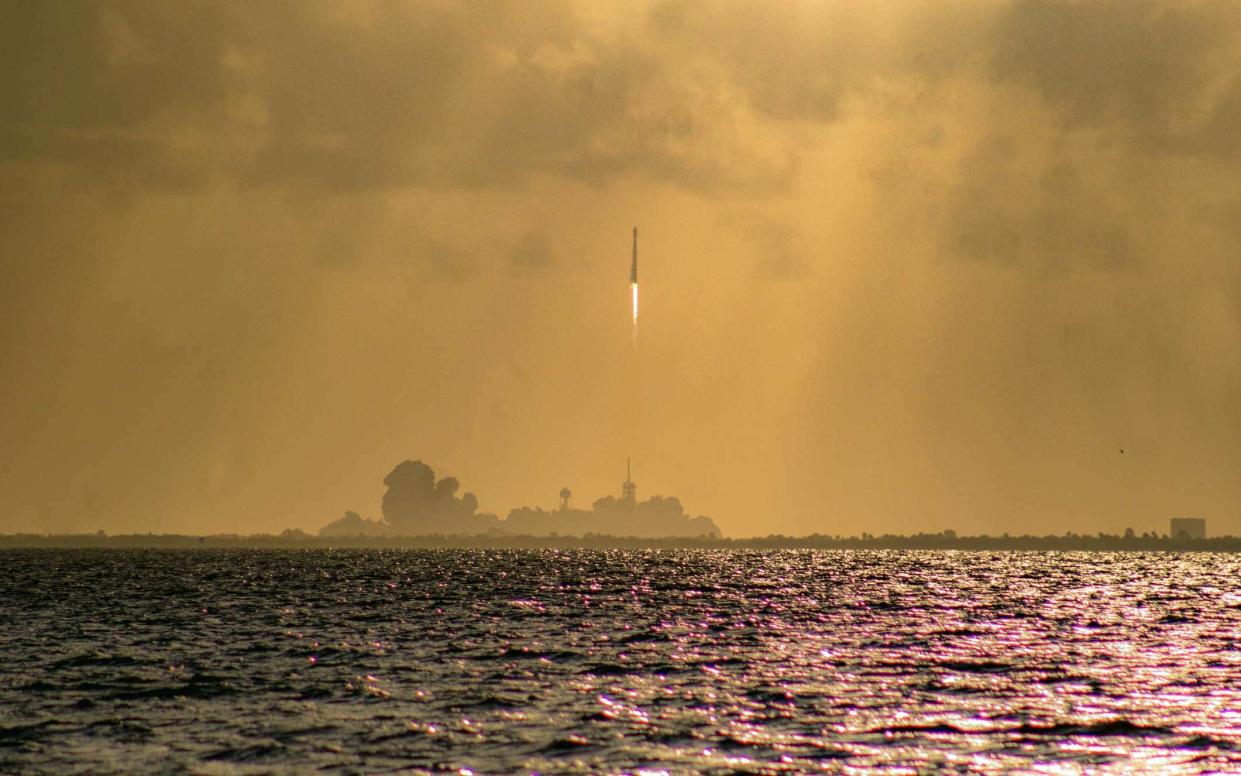
With Richard Branson claiming he is “tantalisingly close” to putting passengers in space, and Elon Musk racing Boeing to reach Mars, space travel is back on the agenda and I am getting a taste of it in what Nasa calls the multi-axis trainer, or MAT. This gut-churning ride for would-be astronauts is guaranteed to put your head in a spin. Upside down, inside out, I am now regretting my waffle and maple syrup breakfast at every twist.
Astronauts use the sphere-shaped machine to prepare for tumble spins during re-entry into Earth’s atmosphere. Strapped into a seat in the centre of the device, I now understand why the men and women who travel to infinity and beyond really are the best of the best.
MAT is just one part of the Astronaut Training Experience (ATX) at Kennedy Space Centre, Florida (admission £39). It offers ground-based travellers like me the chance to sample some of the gruelling tests real-life astronauts face en route to weightlessness.
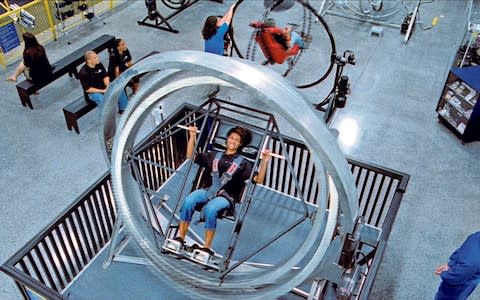
The half-day programme costs from £110, including a ride in a shuttle simulator and micro-gravity harness – a thrilling taste of what candidates experienced in the hit BBC series Astronauts: Do You Have What It Takes?
For real astronauts such as Sam Durrance, this would have been just another day at the office. The scientist spent 25 days in space on two missions to the International Space Station. Now he is one of eight former spacemen employed to meet and greet ATX visitors.
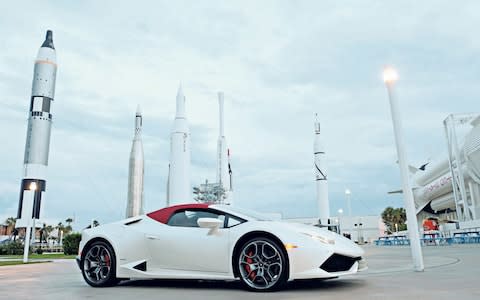
Durrance has degrees in physics and astrogeophysics, so what are the most common questions people ask? “They want to know how we go to the toilet in space – and what the food tastes like. Neither answer is very edifying.”
Durrance and his Nasa colleagues take turns to appear at the daily Lunch with an Astronaut event, which costs £22 per person at Kennedy. The buffet is a chance to meet a real-life space hero, although you are advised to book at least a week ahead.
Otherwise Kennedy’s newest attraction is Heroes & Legends, which relives the pioneering days of space flight. A 4D cinema brings the lift-off experience to life and visitors can stand within an arm’s length of a Gemini 9 capsule.
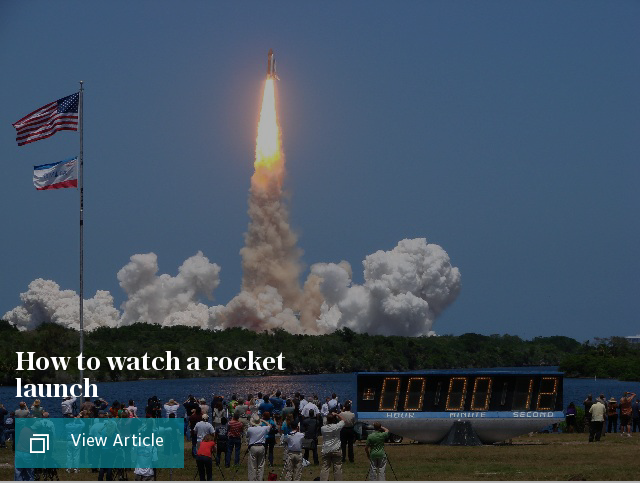
A sinister Redstone rocket – America’s first ballistic missile – hangs from the ceiling, while directly outside the hall are even more spacecraft in the Rocket Garden. Time your visit for dusk and the giant structures are spectacularly lit up against the night sky.
Kennedy is the obvious launch pad for my drive across the south to find the best space-related tourist venues in America. The road trip will cross seven states and end at Flagstaff, Arizona – where astronauts trained to drive the original lunar buggy back in the Sixites.
If you think the idea of space tourism is still pie in the sky, Nasa is already working alongside Musk’s SpaceX on a mission to send two unnamed civilians around the moon. Musk, the multi-billionaire behind PayPal and Tesla, wants to make space travel as easy as hopping on an aeroplane.
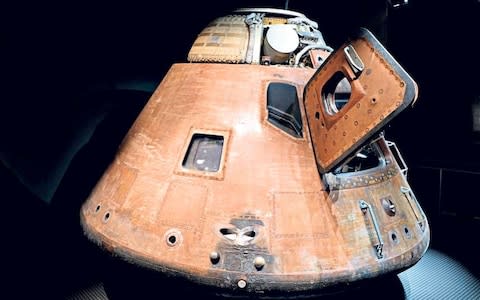
I timed my space journey to coincide with a rocket lift-off at Kennedy but the mission has been delayed. Launches are visible from almost anywhere on the Florida peninsula, with details posted at kennedyspacecenter.com.
Seeing my dismay, the concierge at the Ritz-Carlton Orlando did his best to explain the experience of a launch: “You can feel your heart pumping – the thrust from the engines vibrates through the landscape. There’s a flash of fire, the ground seems to move and then the flame soars into the sky.”
Suitably enthused, I set off on the first leg of my trip. From Orlando it’s a nine-hour drive to the John C Stennis Space Centre – a rocket test base on the Mississippi-Louisiana border originally used to develop the Apollo spacecraft.
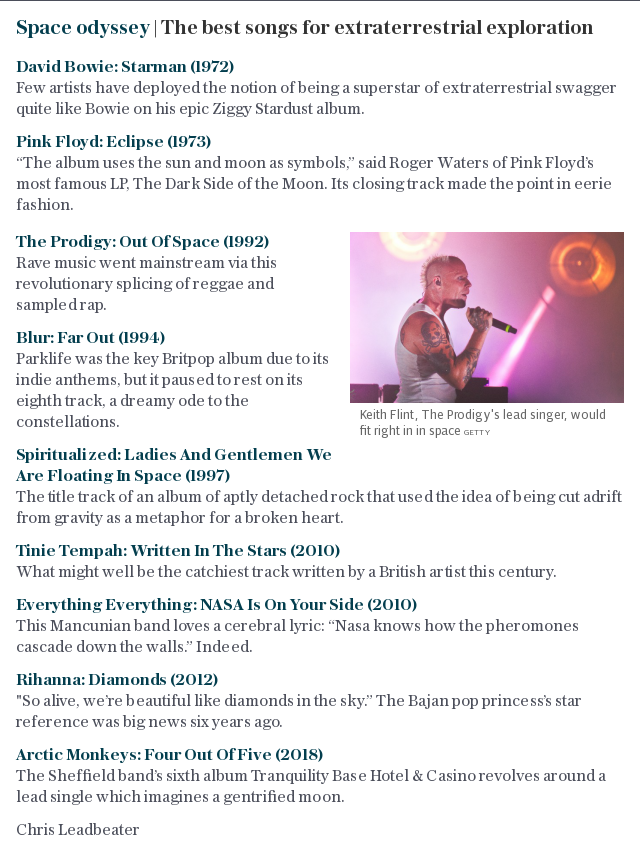
I was driving a Lamborghini Huracán, the closest I could get to a road-going rocket ship. It has air conditioning and cruise control, unlike the Corvette Stingrays most astronauts were given to drive back in the Sixties.
New Orleans is a good base from which to visit Stennis. It was late afternoon when I reached the Big Easy but already my mobile was buzzing with two emergency flood alerts. The deluge was not long coming. Soon the I-10 motorway that runs on stilts above the city became a car park as drivers took refuge from the water below.
Exits to the downtown area around busy Canal Street were blocked. I was tantalisingly close to the Ritz-Carlton I was meant to be staying at but even the city trams were stuck in floodwater. The locals seemed completely unruffled by the storm, although it was clear that even after the devastation of Hurricane Katrina, flood defences are still powerless against a serious deluge.
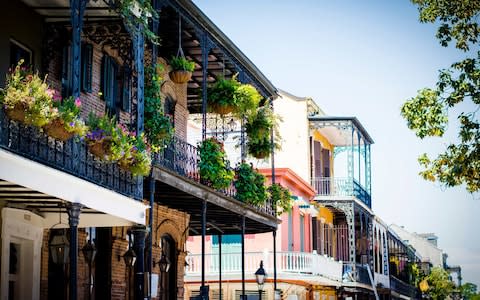
The next day, it took less than an hour to reach Stennis. The Infinity Science Centre (admission £13) is the official visitor complex and offers an educational approach, compared to the theme park razzmatazz of Kennedy. A guide confided that the best time to visit is when a rocket engine test is taking place, although that is pot luck because there is no official schedule.
Everything about the science centre is big, including the engine stage of a Saturn V rocket used to power Apollo. Standing underneath the booster, it was difficult to imagine something this huge ever getting off the ground.
Exhibits and visitor buildings are spread over a large area, so the centre has laid on a bus tour of the main sights. Don’t miss the Space Gallery, which houses a display of space suit technology – some look quite comical, as if they date back to The Jetsons.
I arrived in Houston five hours later and the Buffalo Bayou had flooded. I was staying at The Sam hotel downtown, unaware that two weeks later the area would be devastated by Hurricane Harvey. Nearby Johnson Space Centre is where Nasa’s mission control directs flights made from the launch pad at Kennedy Space Centre 1,000 miles away.
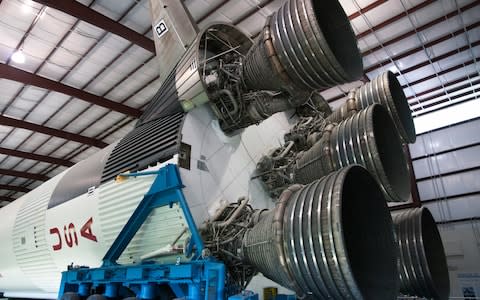
The visitor complex – Space Centre Houston (admission £23) – has an overwhelming array of attractions, all dwarfed by the 747 aircraft parked outside with a shuttle replica loaded on top. The main foyer is also packed with interactive, hands-on exhibits, such as rocket and shuttle simulators.
Starship Gallery includes the Apollo 17 command module, still scorched from its re-entry to Earth’s atmosphere. Another area has a collection of moon rocks, a lunar rover training vehicle and a full-sized Skylab training module.
The highlight of the visit was a chance to step inside the shuttle replica that sits atop the 747. To appreciate the scale, I recommend walking the stairs up the eight-storey access building. There is a lift, if that sounds like one step beyond.
Driving west again through San Antonio and onwards along the Mexican border, even the scenery in this part of Texas felt a little space-age. The huge skylines and lunar-style desert have turned the sandscape into an other-worldly sort of place, where little seems to survive the extreme heat.

That evening, in the V6 coffee bar at the laid-back Gage hotel, in Marathon, I was told about strange lights that appear over the desert in neighbouring town Marfa. Everybody seemed to have an alien story to tell here.
As if to prove it, just across the border in New Mexico is the International UFO Museum (admission £3.50). Roswell has been famous for a spate of UFO sightings since 1947, when a strange, saucer-like shape appeared in the sky during a thunderstorm. The locals have embraced everything extraterrestrial ever since – culminating in the old cinema remodelling itself as a UFO museum. The building claims to be a UFO research centre, too, but some of the exhibits have come straight from the set of a Fifties sci-fi movie.
The next day, en route to El Paso, I visited the McDonald Observatory, near Fort Davis. In the wild backwaters of Texas, the dome-like structures looked like they could have landed from outer space.
The weekly Star Parties (£10) are hugely popular and offer an educational tour of the galaxy. There are limited spaces for these evening sessions, so make sure to book ahead at mcdonaldobservatory.org to avoid a wasted journey.
If you have ever wanted to see a constellation up close, this is the place to do it. Just a peek at the surface of the moon through the enormous Ritchey-Chrétien telescope left me in awe of what these incredible machines can do.
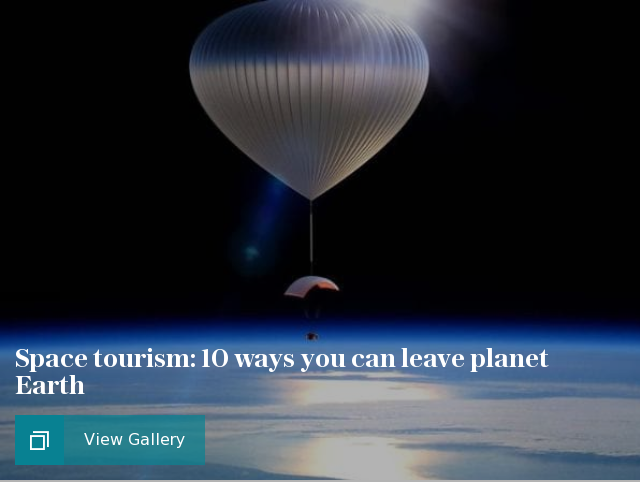
The final 800-mile drive west on the busy I-10 took two days. Temperatures topped 104F (40C) and the road often disappeared in an illusion act caused by the heat haze. My final destination was Arizona – and for good reason.
The rocky landscape outside my window at the Phoenician hotel near Phoenix was a clue. Just up the road near Flagstaff is where Nasa transformed an old volcano into an astronaut training ground to trial the original lunar rover in 1967.
Thousands of tons of explosives were used to re-create the craters of the Sea of Tranquillity, the site where Neil Armstrong and Buzz Aldrin would make their historic landing two years later. Nasa used satellite photographs of the moon itself to get the terrain at Cinder Lake just right – although most of the landscape appears naturally lunar to me.
I was disappointed because the site marked Crater Field 2 is now overrun with quad bikers and destroyed. However, hiking a little further into the desert I found Crater Field 1. Further away from Highway 89, it has survived the test of time and could easily double for the moon’s surface.
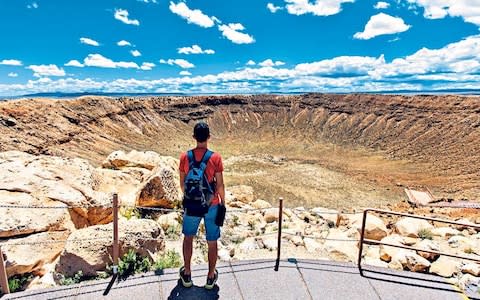
The footprints of astronauts who trained here during the Apollo era have long disappeared. Under my feet, the porous volcanic gravel crunched like outsize grains of sand. However, unlike sand, when I stepped down into one of the craters the shape of the hole remained intact.
Only a handful of the 12 men who walked on the surface of the moon are still alive today – Armstrong himself died in 2012. Perhaps one day the boot marks on the surface of the moon will be the ultimate goal for space tourists?
Durrance believes we are only a few decades away from passenger flights to the moon: “Absolutely. We had the technology 50 years ago. The commercial rockets we are about to see in the sky are far more advanced. They are the beginning of a great adventure.
“Obviously, there is nothing like space on Earth. I’m too old to go back but what I experienced up there will live with me forever.”
The essentials
Hayes & Jarvis (hayesandjarvis.co.uk) is offering a 13-night US road trip from Orlando to Phoenix on a room-only basis from £2,195 per person. The offer includes “standard” car hire and return international flights from Gatwick with British Airways.
A Lamborghini hired from Orland Exotic Car Rentals (orlandoexoticcarrentals.com) will cost you rather more – from £1,160 a day.
